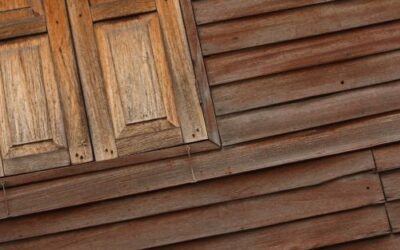Painting a house not only renews its appearance, but also protects its surfaces and increases its value. However, determining how much this project will cost can be a challenge, as there are several factors that influence the budget. In this guide, we’ll explore the main aspects that affect the cost of painting a house, as well as tips for optimising your investment.
Factors that determine the cost of painting a house
Size of the house and surface area to be painted
Size is the most important factor in calculating the cost of painting a house. It is measured in square metres (m²), taking into account walls, ceilings and other areas to be covered.
- How to calculate the m²: Multiply the height of the walls by their width and subtract the spaces occupied by doors or windows.
- Practical example: If a wall is 3 metres high and 5 metres wide, its area is 15 m².
Type of paint used
The price of paint varies according to its quality, durability and characteristics.
- Economy: Cheaper, but usually require more coats.
- Premium: They offer greater coverage and durability, ideal for high traffic homes.
- Ecological: Environmentally friendly, although slightly more expensive, they are an excellent investment for those seeking sustainability.
Condition of walls
The current condition of the walls significantly affects the budget.
- If they are in good condition, the work will be quicker and cheaper.
- Walls with damp, cracks or peeling paint will need to be repaired first, which increases the cost.
Contact our professionals
Average costs according to type of house
Small houses (up to 80 m²)
Painting a small house generally involves less time and materials due to its size. It is ideal for those who are looking to renovate a space without complications, using colours that provide spaciousness and luminosity.
Medium-sized houses (80-150 m²)
In houses of this size, additional factors such as the number of rooms, the inclusion of ceilings and possible decorative details are considered. A project of this type requires more detailed planning to optimise results.
Large houses (over 150 m²)
Large houses often require a more customised approach, especially if they include special finishes or outdoor spaces such as facades and terraces. This type of project is ideal for those looking to give a unique and professional touch to their home.
Additional services that may increase the price
Façade repairs
If the painting involves exteriors or facades, it is essential to assess the previous state of the surface. Rehabilitation may involve the removal of cracks, pressure washing or special preparation of damaged areas, which requires detailed planning to ensure an optimal finish.
Use of special paints
Antibacterial, moisture resistant or eco-friendly paints offer unique benefits such as increased durability, additional protection and sustainability. These options are ideal for those seeking customised solutions for their home.
Professional workmanship
Hiring professionals such as Bartolomé Bas Pinturas ensures high quality and long-lasting results. Experience, the use of advanced tools and knowledge of specific techniques provide an added value that guarantees customer satisfaction.
How to save when painting a house?
Paint in phases
Divide the project into stages, starting with the most important areas. This allows costs to be spread over time without compromising quality.
Take advantage of promotions
Look for special offers or discounts in low seasons. For example, Bartolomé Bas Pinturas often offers competitive prices on comprehensive painting services.
Other publications that may interest you
Colours that increase the feeling of space in small houses
You don't need to tear down partitions or do a complete renovation to make your house look bigger. In many cases, paint can completely transform the perception of space. Choosing the right colours not only brings harmony and light, but also creates the illusion of...
Differences between matt, satin and gloss paint: which is best for your home?
When we think of painting our house, we usually think of colours. But there is another equally important detail that can completely change the result: the paint finish. Choosing between matt, satin or gloss paint not only affects the aesthetics, but also the...
Basic care to extend the service life of exterior wood
Discover how to protect and maintain outdoor wood Wood is a warm, elegant and natural material, ideal for terraces, windows, pergolas or outdoor furniture. But in order to preserve its beauty and functionality, it needs specific care against the aggressions of the...




